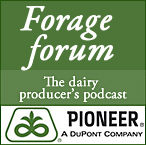This is terrible news to have to report – an outbreak of foot-and-mouth disease in Britian. Authorities in that country are working tiredlessly to contain the outbreak.
British authorities rushed to halt an outbreak of foot-and-mouth disease Saturday by slaughtering and then incinerating 60 cattle on an infected farm near London. Hours later, Britain’s environmental agency announced that the strain of the disease in the cattle was identical to one found at a nearby animal research lab.
Prime Minister Gordon Brown canceled his vacation and returned to London, where he summoned an emergency meeting of the government crisis committee. Speaking after the meeting, he said authorities would work round-the-clock to stamp out the disease that six years ago crippled the country’s farming and tourism industry.
Symptoms of foot-and-mouth disease were first reported Thursday at a farm near Guildford 30 miles southwest of London. By Friday, the British government had placed a nationwide ban on the movement of all animals with cloven hooves, including cattle, pigs, sheep and goats.
A six-mile surveillance zone was set up around the farm. Residents within the area were asked to inspect their animals for symptoms, which in cattle include smacking of the lips and blisters in their mouths and on their feet. The disease can be deadly in livestock but poses no risk to humans.
The strain of the disease on the infected farm has not recently been found in animals, the Department for Environment, Food and Rural Affairs said in a statement. It was, however, “most similar to strains used in international diagnostic laboratories and in vaccine production, including at the Pirbright site shared by the Institute of Animal Health and Merial Animal Health Ltd., a pharmaceutical company.” The Pirbright site is a few miles from the infected farm.
Meanwhile, the British government banned the export of livestock, meat and milk, and several countries took precautionary measures of their own. The United States has banned swine products from the United Kingdom, the Department of Agriculture.
 Our thoughts and prayers go out to the Bostana Dairy in eastern Montana. A large fire this week killed about 200 cows and caused at least $2.5 million in damage.
Our thoughts and prayers go out to the Bostana Dairy in eastern Montana. A large fire this week killed about 200 cows and caused at least $2.5 million in damage.
 Just what exactly is kernel texture? Dr. Bill Mahanna, Pioneer Global Nutritional Sciences Manager, explores this question while comparing hard starch vs. soft starch. He also explains the link to digestibility and touches upon current Ohio State University research on corn grain and corn silage – what are the influences on feedability and what is the role of fermentation?
Just what exactly is kernel texture? Dr. Bill Mahanna, Pioneer Global Nutritional Sciences Manager, explores this question while comparing hard starch vs. soft starch. He also explains the link to digestibility and touches upon current Ohio State University research on corn grain and corn silage – what are the influences on feedability and what is the role of fermentation?